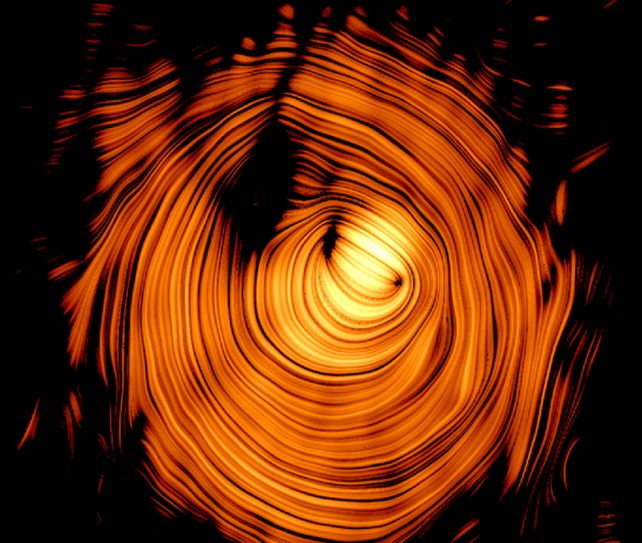A galaxy billions of light-years across space-time has puzzled scientists since its discovery more than 50 years ago.
PKS 1424+240 is a blazar, with a hugely active black hole in its center blasting powerful jets of plasma out into intergalactic space. To qualify as a blazar, a galaxy has to be oriented in a very specific way – with one of its jets pointed directly towards Earth, making the galaxy appear to absolutely blaze with light.
The long-standing mystery is here. PKS 1424+240 is one of the brightest neutrino-producing blazars in the sky, pumping out gamma rays consistent with superluminal jets – yet the speed of its jets seems too slow to explain the light it produces.
Related: Matter Ejected From Crashing Neutron Stars Appeared to Break Light Speed
Now, 15 years of observations have revealed the answer. Using the Very Long Baseline Array, a team led by astronomer Yuri Kovalev of the Max Planck Institute of Radio Astronomy has mapped the magnetic fields in the jet as it zooms towards the Milky Way.

"When we reconstructed the image, it looked absolutely stunning," Kovalev says. "We have never seen anything quite like it – a near-perfect toroidal magnetic field with a jet, pointing straight at us."
Black hole jets are produced by black holes that are actively slurping up matter from the space around them. As material whirls around the black hole, some of it is channeled along the black hole's magnetic field lines outside the event horizon, which accelerate the plasma to the black hole's poles.
From there, the material is launched into space at tremendous speeds as jets of plasma, approaching the velocity of light. Indeed, they move so fast that, if they're pointing directly at us, they appear to travel at superluminal speeds – faster than light. They're not, of course, but it's still pretty neat.

Kovalev and his team collected 15 years' worth of data on PKS 1424+240 to observe the polarization of light in the jet – the degree to which the light is twisted. This polarization occurs due to the effect of magnetic fields, so a polarization map can be used to map magnetic fields.
The results showed magnetic fields wrapped around the jet like a bullseye – revealing that, from our point of view, we're looking almost exactly right down its barrel. This, the researchers say, neatly resolves the paradox of PKS 1424+240's apparently slow jet.
"This alignment causes a boost in brightness by a factor of 30 or more," says astronomer Jack Livingston of the Max Planck Institute for Radio Astronomy. "At the same time, the jet appears to move slowly due to projection effects – a classic optical illusion."
Kovalev adds, "Solving this puzzle confirms that active galactic nuclei with supermassive black holes are not only powerful accelerators of electrons, but also of protons – the origin of the observed high-energy neutrinos."
The findings have been published in Astronomy & Astrophysics.
